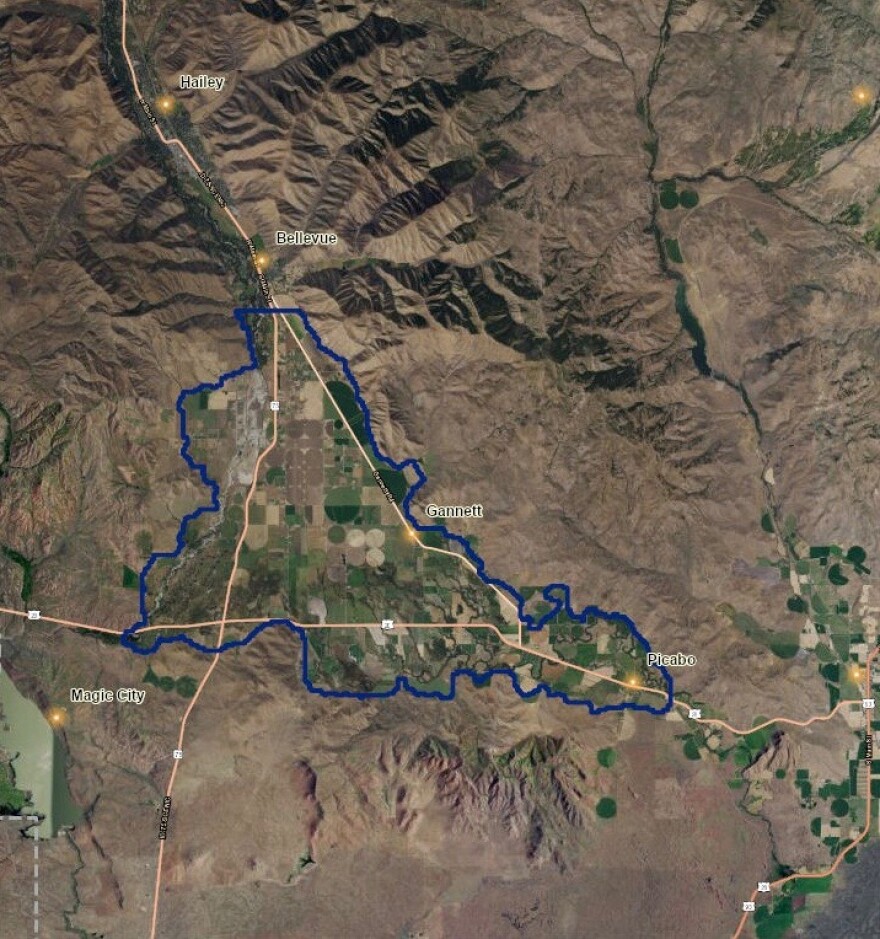Farmers who irrigate their crops with groundwater in a region of south central Idaho will need to turn off their water this week, according to an order from Idaho’s Department of Water Resources.
As a result, 140 operations with more than 300 groundwater rights that support 23,000 acres of farmland south of Bellevue will stop irrigating alfalfa, barley and potatoes as of July 1.
The order comes after a six-day hearing this month during which Director Gary Spackman heard testimony from surface water users, who argued pumping by groundwater users means they don’t get their full share of water, and groundwater users who made the case for why they shouldn’t be curtailed on short notice. Spackman ruled in favor of the surface users.
Surface water users get their water from streams or reservoirs. Their rights in the Wood River Valley, and in particular an agricultural area south of Bellevue called the Bellevue Triangle, date back to the 1880s. In comparison, the development of groundwater wells there took off in the 1940s. That means most surface water users have water rights that are senior and most groundwater rights are junior.
Idaho manages water according to the “prior appropriation doctrine,” so people with older water rights get higher priority to the water in times of scarcity.
Senior surface water users in recent years have argued that unchecked groundwater pumping in the region means they don’t get all the water they’re entitled to, but their actions to rectify the situation legally have been dismissed by Spackman on procedural grounds twice.
Though Idaho law says the state must manage water in a way that acknowledges surface water and groundwater are connected, it has not done so in the Wood River Valley.
Groundwater users in the valley have never been curtailed up until this point, according to Spackman’s ruling. That’s despite the state's creation of a Groundwater Management Area in 1991, effectively ending development of wells over concerns about groundwater levels.
In typical water years since 1991, most users have been able to get their full allotment. But not in drought years, and especially not this year amid an ongoing, multi-year drought that has worsened substantially, even since last month.
Kevin Lakey, the water manager for District 37, called it the worst water supply year he’d seen since starting his job in 2003.
Surface water irrigators with some of the earliest water rights, dating back to 1883, are expected to run out of water by the end of the month and many fields are already dried up.
Spackman issued the ruling Monday afternoon, making the case that shutting off groundwater wells this irrigation season in the Bellevue Triangle would benefit senior surface water users who get their supply from Silver Creek or the Little Wood River.
A groundwater model developed by the department shows once groundwater pumping in the triangle eases off, more water shows up in streams that flow into Silver Creek.
Surface water farmers, many located in Lincoln and Gooding counties, cited projected damages to their individual operations ranging from about $40,000 to $200,000 this season, and they said some harm is likely done.
Groundwater users said any benefit from shutting off the wells is uncertain, in part because the irrigation season is already underway. But some surface water users said getting more water at the end of the season could be enough to save certain crops.
Parties can file appeals on the order within 14 days.
Correction: A previous version of this story misspelled Kevin Lakey’s last name as “Lackey.”
Find reporter Rachel Cohen on Twitter @racheld_cohen
Copyright 2021 Boise State Public Radio



